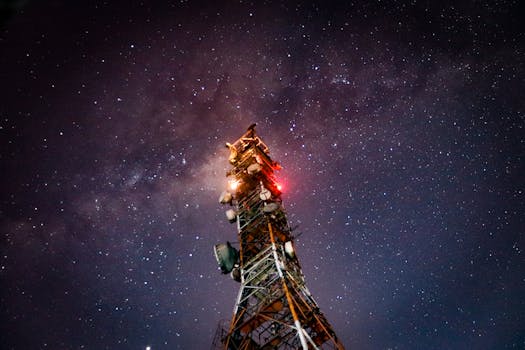
Starlink: Revolutionizing Global Internet Connectivity with Satellite Technology
Starlink is a cutting-edge satellite constellation developed by SpaceX, founded by Elon Musk, with the ambitious goal of providing high-speed, low-latency internet connectivity to the entire world. This innovative project aims to bridge the digital divide, connecting underserved and remote communities, and transforming the way we communicate. With its advanced satellite technology, Starlink is poised to revolutionize the global internet landscape.
The Concept and Development of Starlink
SpaceX began developing Starlink in 2015, with the initial goal of launching a constellation of 4,425 satellites into low Earth orbit (LEO). The project has since expanded to include nearly 42,000 satellites, with the first batch launched in 2019. Each satellite is equipped with advanced Hall effect thrusters, allowing for efficient orbit raising and station-keeping. The satellites are designed to be compact, weighing approximately 227 kilograms, and are built with a lifespan of around five to seven years.
How Starlink Works
Starlink’s satellite constellation operates in LEO, at an altitude of approximately 550 kilometers. This proximity to Earth enables the satellites to provide lower latency and higher bandwidth compared to traditional geostationary satellites. The system uses a phased array antenna, allowing the satellites to steer and shape their beams, maximizing connectivity and minimizing interference. Users access the internet through a compact, sleek terminal, which communicates with the Starlink satellites, providing a fast and reliable connection.
Benefits and Applications of Starlink
Starlink has the potential to transform various aspects of our lives, from remote work and education to emergency response and environmental monitoring. Some of the key benefits and applications of Starlink include:
Global connectivity: Starlink can provide internet access to underserved and remote communities, bridging the digital divide and fostering economic growth.
Low latency: With its advanced satellite technology, Starlink can offer latency as low as 20 milliseconds, enabling seamless video conferencing, online gaming, and real-time communication.
Disaster response: Starlink can provide critical connectivity during natural disasters, enabling emergency responders to coordinate relief efforts and maintain communication.
Environmental monitoring: The satellite constellation can be used to monitor climate change, track deforestation, and detect natural disasters, supporting conservation efforts and sustainability.
Challenges and Controversies Surrounding Starlink
While Starlink has the potential to revolutionize global internet connectivity, it also faces several challenges and controversies. Some of the concerns include:
Space debris: The large number of satellites in the Starlink constellation has raised concerns about space debris and the potential for collisions.
Interference: The satellite system has been criticized for interfering with astronomical observations, potentially disrupting scientific research.
Regulatory frameworks: The lack of clear regulatory frameworks for satellite constellations has created uncertainty and challenges for SpaceX and other companies operating in this space.




